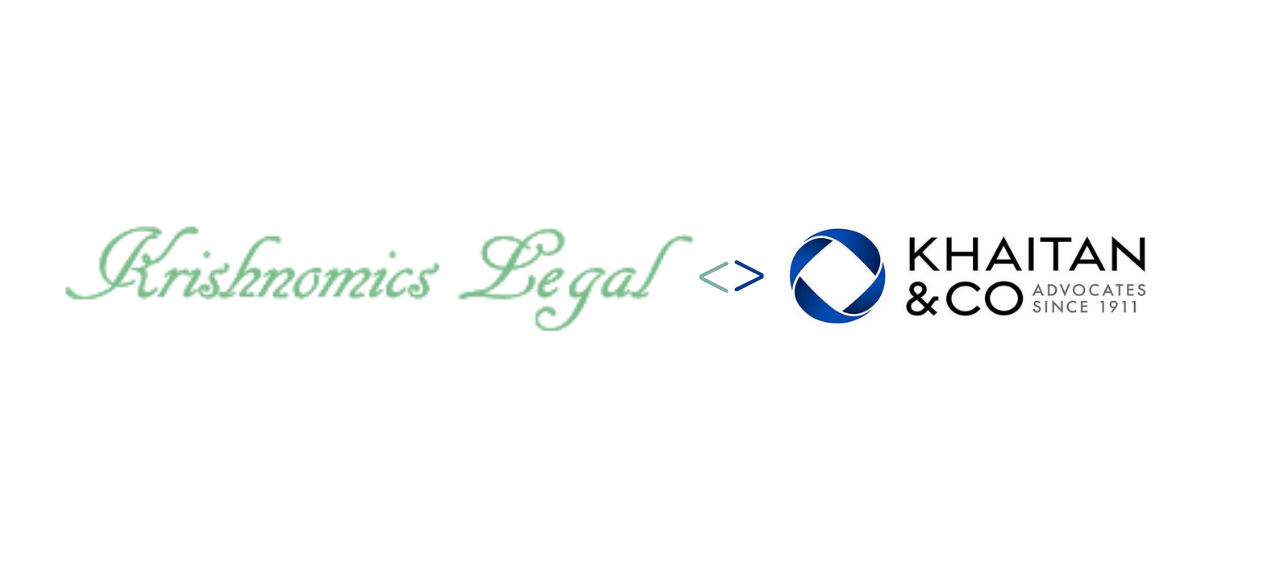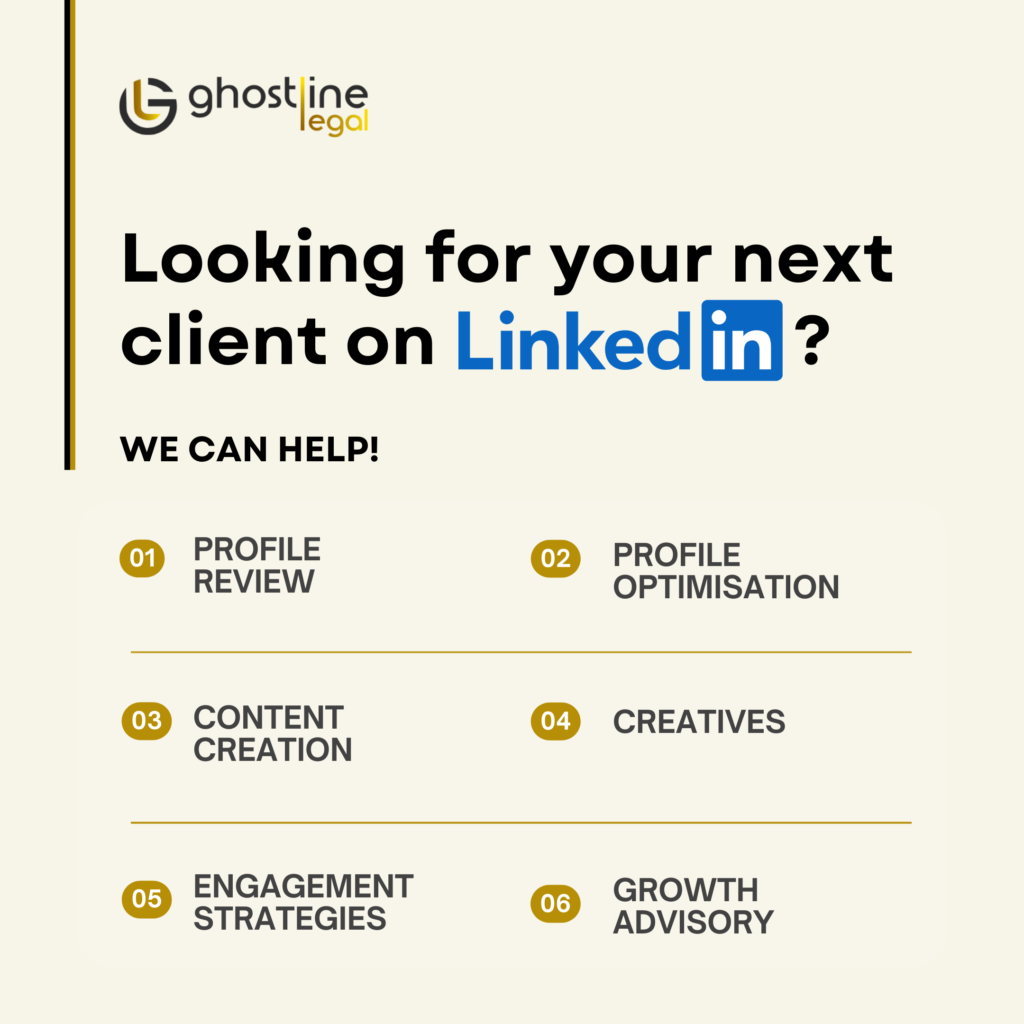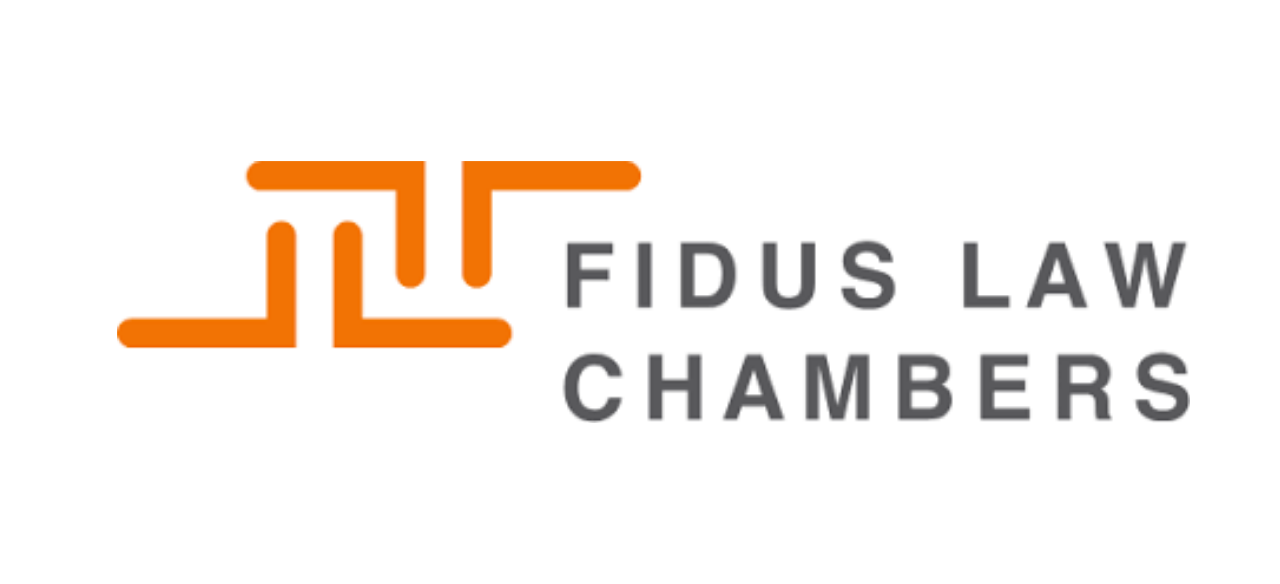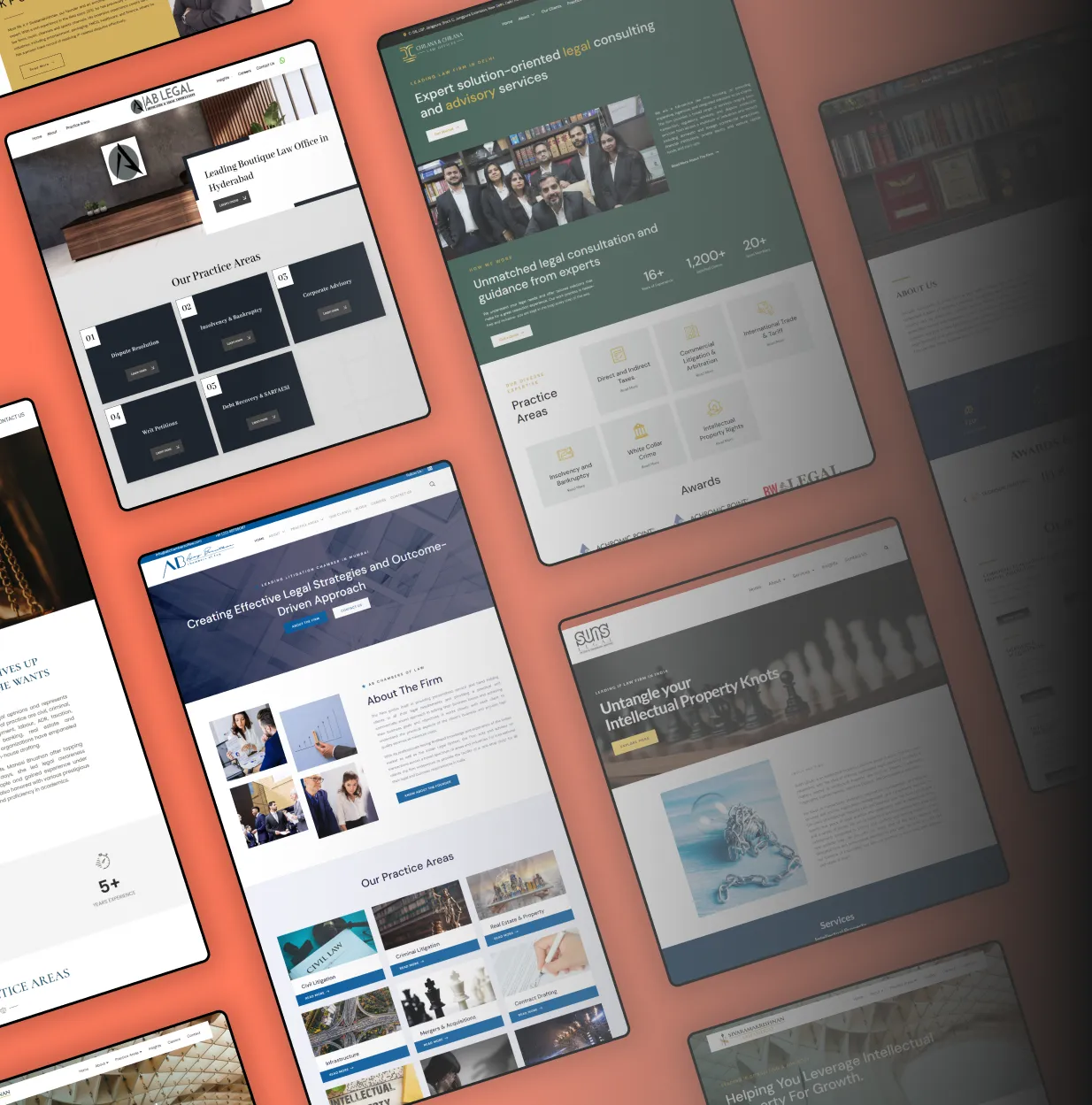This article has been written by our BD and social media consultants Akshit Prajapati and Anam Khan.
Introduction
LinkedIn has evolved into a powerhouse for professionals, especially for lawyers seeking to expand their networks and grow their practices. With over 93% of attorneys utilizing the platform according to a 2016 ABA Legal Technology Survey Report, it has become an indispensable tool for building relationships, establishing thought leadership, and generating business opportunities. Beyond its initial reputation as a recruitment platform, LinkedIn now serves as a dynamic space where professionals educate themselves, learn about industry trends, and connect with peers globally.
For lawyers, this means more than just having a profile; it is about actively engaging to leverage the platform’s potential. By tapping into national and international networks, lawyers can access specialised expertise and secure referrals for cases across different locations. LinkedIn also facilitates connections with general counsels and corporate clients, offering avenues to expand one’s practice and reach new clientele across diverse industries and geographical boundaries. In today’s globalised economy, LinkedIn is not just an option—it is a crucial tool for efficient networking and growth within the legal profession.
Here are multiple strategies for leveraging LinkedIn to enhance your legal practice and establish a stronger online presence:
Become a thought leader using LinkedIn
Becoming a recognized authority in the legal field on LinkedIn requires strategic content marketing to establish thought leadership. This involves offering valuable insights to position yourself as the foremost expert in your niche, ensuring visibility to your audience and potential clients, thereby distinguishing yourself from the competition.
LinkedIn is pivotal for thought leadership, serving both as a platform for content creation and distribution among legal professionals. Based on Greentarget’s State of Digital and Content Marketing survey, LinkedIn is excelling in two key areas: serving as a content hub and a preferred distribution platform for in-house counsel and C-suite executives. The survey reveals that 96% of executives favour LinkedIn as their primary content source, while 57% of in-house counsel and 64% of C-suite members find it valuable for business-related content.
Decision-makers now prioritise LinkedIn profiles when evaluating potential legal partners, acknowledging their importance alongside website bios, connections, and endorsements. Achieving thought leadership on LinkedIn requires creating high-quality, client-centric content that resonates with your audience. This content can take various forms such as:
-
- Infographics: Visual tools are essential for simplifying complex legal information and making it more digestible for your target audience. Infographics on LinkedIn can help you convey legal concepts effectively, enhancing engagement and understanding among your connections.
-
- Blogs: Sharing legal insights and analysis through blogs on LinkedIn showcases your expertise and thought leadership in your practice area. Regular blogging helps you stay top-of-mind with your connections and positions you as a trusted authority in your field.
-
- Personalised Content: Crafting content tailored to address the everyday concerns of your audience showcases your empathy and understanding of their needs, fostering a sense of relatability. This personalised approach strengthens connections and boosts engagement within your network. Additionally, don’t shy away from sharing lessons learned from challenges and failures, as they can be inspiring and relatable to your audience. Remember to acknowledge and engage with comments on your posts, inviting further discussion and interaction.
-
- Podcasts/Videos: Embracing multimedia formats like podcasts and videos on LinkedIn allows you to connect with your audience on a more personal level. These formats enable you to convey information in a dynamic and engaging way, helping to build rapport and credibility with your connections.
-
- Informative Content/Updates: Providing timely and relevant updates on legal developments and industry trends keeps your network informed and positions you as a valuable resource. Sharing informative content regularly demonstrates your commitment to staying current and adds value to your connections’ LinkedIn experience.
-
- Engagement: Engaging with others’ content is equally important in networking on LinkedIn. Instead of simply reacting with likes, contribute to discussions by sharing your takeaways, asking questions, or offering your opinion. Meaningful engagement signals active participation and interest in the topics being discussed, which can lead to valuable connections and collaborations within the legal community.
By engaging in thought leadership, you can earn LinkedIn’s prestigious Top Voices badge, a recognition that enhances your credibility and visibility on the platform. This badge is awarded to outstanding content creators, distinguishing them as high-quality sources of information and insights. The Top Voices badge comes in two tiers: Top Voice and Community Top Voice, highlighting the most influential and impactful contributors in their respective fields.
The top tier badge which is the blue Top Voice badge, is ideally reserved for senior-level experts and leaders. These individuals are handpicked by the LinkedIn Editorial team through a rigorous vetting process. However, the Community Top Voice Badge, Top Voice badge is not specific to a particular niche or area of expertise; it simply denotes the individual as a Top Voice on LinkedIn. Earning either of these badges is highly beneficial for those looking to establish a strong personal brand and solidify their status as thought leaders in their respective industries.
Leverage LinkedIn groups and communities
As a lawyer, leveraging LinkedIn groups and communities can offer numerous benefits that contribute to professional growth and business success.
These groups provide a platform for targeted networking, allowing lawyers to connect with industry-specific professionals, potential clients, partners, and peers. By engaging in relevant LinkedIn groups, lawyers can gain valuable insights from industry experts, stay updated on industry trends, and explore partnership opportunities that can lead to business expansion and collaboration.
Moreover, LinkedIn groups facilitate knowledge sharing and learning within the legal community. Lawyers can exchange insights, discuss legal trends, seek advice, and make informed decisions by participating in group discussions. This collaborative environment enables professionals to tap into a wealth of knowledge, stay ahead of industry developments, and gain valuable insights that can drive business growth and success.
By consistently sharing expertise, contributing to discussions, and offering solutions to legal queries, lawyers can position themselves as authorities in their practice areas. This enhances their thought leadership among peers and potential clients, ultimately boosting their professional reputation and attracting new business opportunities.
LinkedIn groups also offer opportunities for recruitment and talent acquisition. Lawyers can use these groups to showcase their firm’s culture, identify potential talent, and engage with professionals who may be prospective employees or valuable additions to their legal team. This proactive approach to talent acquisition can help lawyers attract top talent and foster a strong team to support their business growth objectives.
Networking
Networking as a lawyer on LinkedIn requires a strategic approach aimed at building meaningful connections and fostering professional relationships within the legal community. To make LinkedIn work effectively for you as a lawyer, it is essential to initiate conversations with potential connections rather than simply sending connection requests.
Starting a conversation allows you to establish rapport and understand the person’s background and interests better. Preparation is key before engaging in these conversations; take the time to review the person’s profile, website, and company page to demonstrate genuine interest and avoid wasting their time. Coming prepared shows professionalism and respect for the other person’s time and expertise. Keep your messages concise, focused, and contextualised, explaining why you want to connect and how you can potentially collaborate. Once the conversation progresses positively, consider scheduling a call, or face-to-face coffee to further deepen the relationship.
Moreover, supporting others in your network is a fundamental aspect of effective networking on LinkedIn. Offer assistance, share relevant insights or articles, and facilitate introductions where possible in personal messages. Adopting a mindset of giving more than taking fosters a supportive and collaborative network where professionals are willing to help each other grow and succeed.
Do not hesitate to ask for help when needed. Your network can be a valuable resource for advice, introductions, or recommendations. Remember to reciprocate the support you receive, as networking is a two-way street where mutual assistance strengthens relationships and fosters a sense of community.
Talent Acquisition
LinkedIn offers numerous advantages that make it an invaluable tool for lawyers looking to hire talented professionals for their firms or legal teams. Firstly, LinkedIn provides access to a vast network of professionals across various industries, allowing lawyers to tap into a diverse pool of potential candidates. This extensive network enables lawyers to broaden their search beyond traditional recruiting channels and connect with individuals who possess the specific skills and expertise they require.
Moreover, LinkedIn serves as a platform for posting job opportunities and building brand, enhancing visibility and attracting top talent. By showcasing the culture, values, and career opportunities, lawyers can attract candidates who align with their organisation’s ethos and goals.








